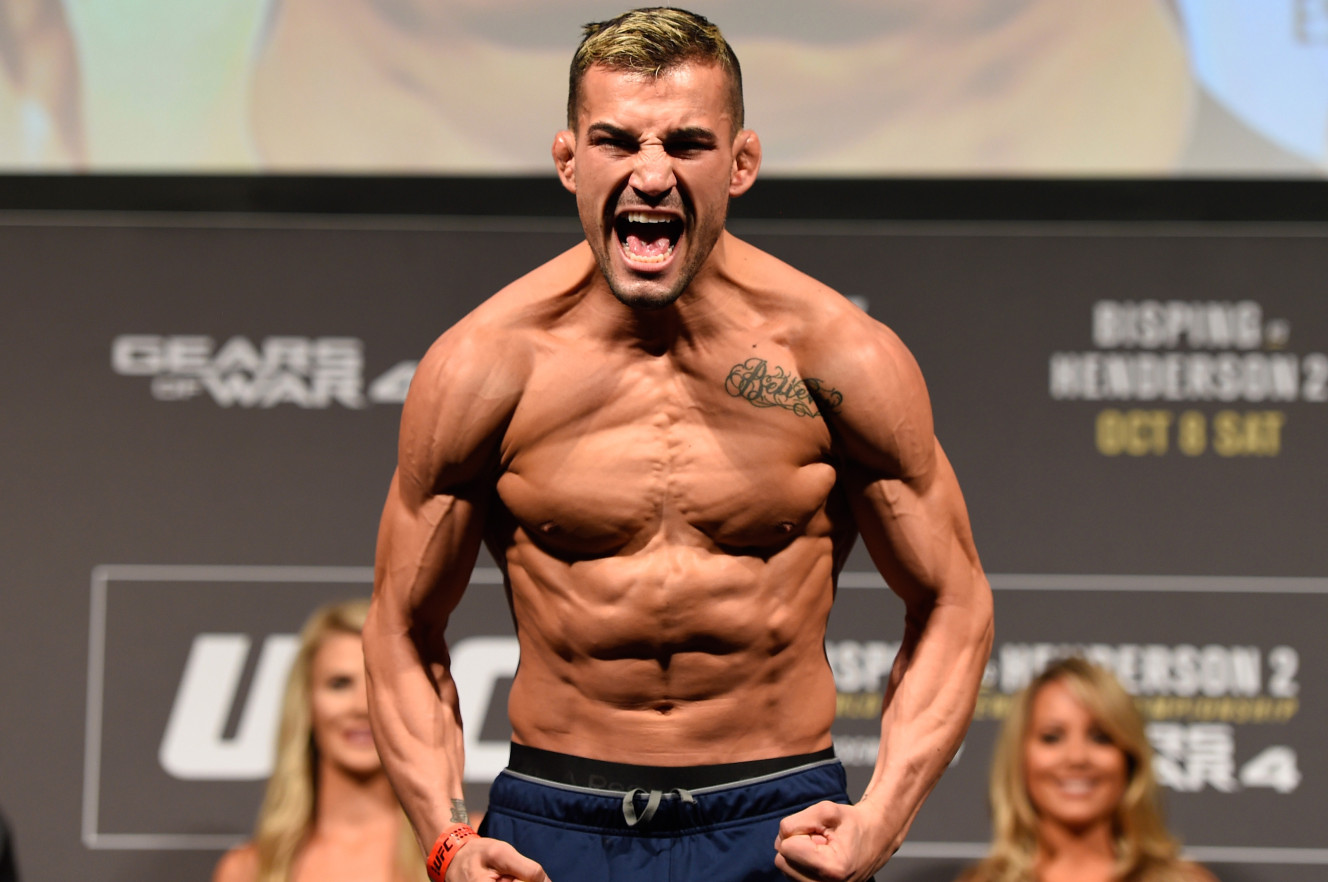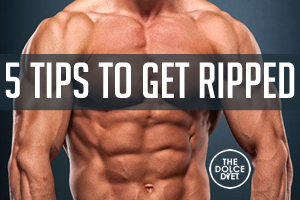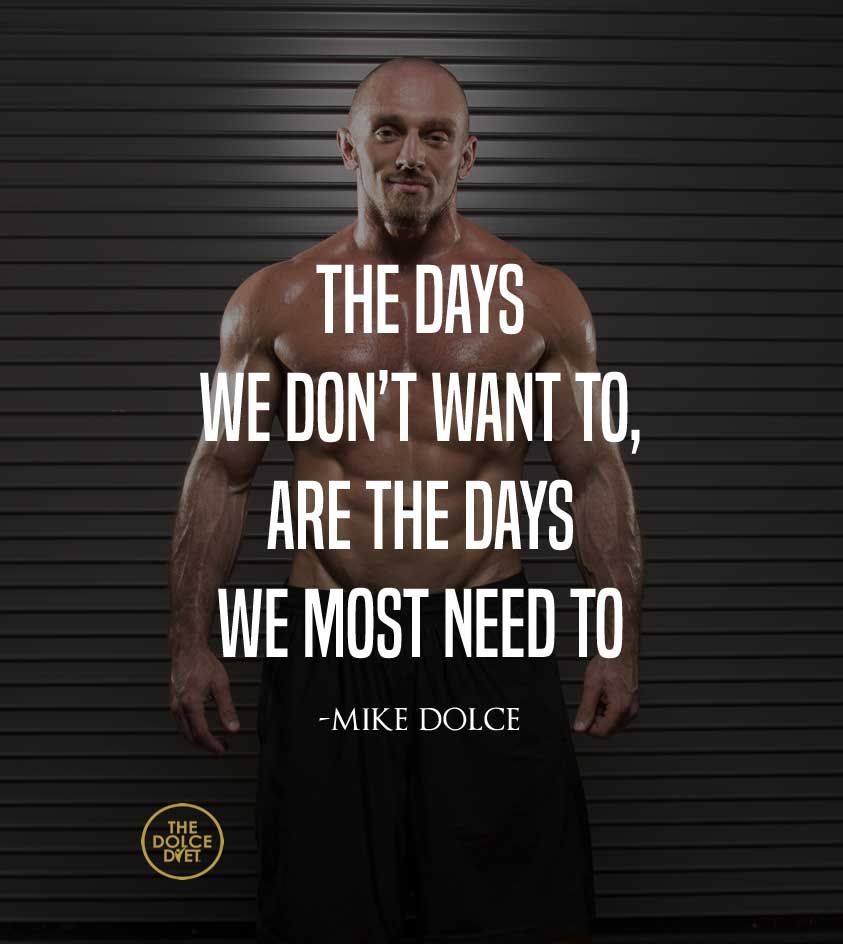An inside look at a UFC fighter’s meticulous weight battle
By Michael Blaustein
March 3, 2017
 At noon on Friday, 11-0 UFC fighter Mirsad Bektic will weigh in at 145 pounds for his featherweight fight against 22-5 Darren Elkins in one of the best undercard fights at UFC 209.
At noon on Friday, 11-0 UFC fighter Mirsad Bektic will weigh in at 145 pounds for his featherweight fight against 22-5 Darren Elkins in one of the best undercard fights at UFC 209.
Bektic will weigh around 164 pounds when he enters the cage 36 hours later. The weight gain Bektic puts his body through is shockingly abrupt, but it is a normal part of combat sports. (To wit, on Friday morning, Khabib Nurmagomedov was hospitalized due to complications from his weight cut, and his interim lightweight title fight was canceled.)
Bektic’s offseason weight is 180 pounds, and he does not execute the meticulous weight drop and gain by himself. Like most top-level mixed martial artists, he works with a nutritionist.
In Bektic’s case, that nutritionist is Mike Dolce, one of the most respected in the MMA world. Dolce started his career nearly 20 years ago, training the likes of Quinton Jackson and Randy Couture as they started their ascent to becoming UFC legends.
Now, Dolce and his team of certified dieticians work with between eight to 10 MMA fighters year-round making sure they eat a balanced diet that minimizes weight and maximizes power.
Dolce builds a specific meal plan for each of his fighters that accounts for their body types, fighting styles, and training methods.
“Think about [Nick and Nate] Diaz, they are a longer, leaner, lighter athlete. They’re very endurance-driven, most of their fights are won through volume and constant pace,” Dolce told The Post. “Then you can think of another athlete who is very stocky and bulky like Yoel Romero. Very explosive, very heavy muscle fiber recruitment … it’s harder for that athlete to push pace, so you need to understand the type of energy systems the athlete will use and make sure that they are fueled for that.
“With the bulkier athletes, they’re going to need a higher protein content because their muscles need a higher level of amino acids to help repair the muscle fibers as they break down. They’re also going to need more carbohydrates and a more constant carbohydrate intake as those muscle primarily use stored glycogen as it gets converted into glucose, which is the primary fuel source for those working muscles.
“When you get a leaner, more endurance-prone athlete, you don’t have to have as high of a total protein intake or as high of a total carbohydrate intake, you can have a higher ratio of essential fats floating through their diet.”
Dolce’s obsessively detailed meal plans prioritize his fighter’s long-term health first, their training performance second and their weight third. Taste is taken into consideration, but only if it doesn’t compromise the other three factors.
Dolce provides recipes for things like pasta and hamburgers, except that many of the craveable components have been removed. Pasta sauce is made from avocado oil, steamed tomatoes and plain beef instead of olive oil, sauteed garlic and Italian sausage. Likewise, Dolce’s “fries” are actually not actually fried at all — they are baked sweet potato sticks seasoned with cinnamon and honey.
Dolce’s roster of fighters, which includes Ronda Rousey, prefers his system. There are alternatives. Dolce does not ask his fighters to eat steamed broccoli and boiled chicken, or run in plastic sweat suits, or go through emotional steam treatments like Cristiane “Cyborg” Justino famously did during one of her hellish weight cuts.
Instead, Dolce claims, his fighters have abnormally easy cuts because he plans things out so far in advance. His fighters never have to drop huge amounts of weight in short amounts of time. As a result of his planning, Dolce claims none of his fighters — he estimates plotting weight cuts for well over 1,000 fights over his 20-year career — ever have missed weight.
Bektic is now Dolce’s star client.
The 26-year-old Bosnian is one of the best young fighters to come out of American Top Team (ATT), the legendary gym in Coconut Creek, Fla., that is home to UFC champions such as Amanda Nunes, Joanna Jedrzejczyk and Tyron Woodley.
In a featherweight division full of lightning-fast strikers like Max Holloway and more flat-footed knockout artists like Jose Aldo, Bektic has a chance to rise up through the ranks because of his sheer athleticism.
“I feel powerful, I feel outstanding, focused,” Bektic said Tuesday, three days before the UFC 209 weigh-in. “My body is the healthiest it’s ever been. I feel like I can do anything.”
Jovial and relaxed, Bektic spoke to The Post from Las Vegas in between his morning cardio workout and afternoon training session. He already had downed a breakfast bowl of oats, nuts, seeds, and fruit, a snack of blueberries and almonds and a gallon and a half of water. Bektic isn’t worried over the details of making weight because Dolce has planned his diet down to the last bite of food, sip of water and even bowel movement.
Here is exactly how Dolce and Bektic shed the weight:
10 weeks from fight night — 181 pounds
This is the time when Bektic transitions from his offseason routines and starts gearing up for his fight against Elkins.
He enters training camp at ATT, cuts out any non-fighting distractions, like dating, and mentally commits to his weight cut.
Bektic’s diet does not change significantly yet, however. Every four weeks all year long, he receives a detailed meal plan from Dolce that he follows religiously, and the routine he’s built up during the year will continue far into his training camp.
Every morning, Bektic wakes up, goes to the bathroom and texts his weight to Dolce. Then he goes about his day, which usually includes two training sessions, three large meals and two snacks composed of a wide variety of fruits, vegetables, seeds, nuts, grains, and meat. The idea, Dolce says, is to make sure Bektic gets all the micronutrients — things like Vitamin D, Calcium, Zinc — his body needs to maintain his health as his training intensifies.
A typical day of eating at this point looks roughly like this:
Breakfast bowl (see above)
Midday snack of fruit, nuts and seeds
An omelette for lunch with a side salad full of bell peppers, onions, and spinach
Another snack of fruit, nuts and seeds
Pineapple chicken stir fry with brown rice, vegetables and a smidge of soy sauce
Taken all together, Dolce’s goal is to make sure Bektic maintains his muscle mass by eating around 2,600 calories per day, though the trainer insists his diet is not about calorie counting.
In theory, anyone can follow the diet — and 2,000 people sign up for The Dolce Diet every year. Dolce’s fighters, however, have to be far more disciplined than the average person. Their livelihood depends on it.
3 weeks from fight night — 164 pounds
Though Bektic’s food has not really changed over the past seven weeks, he’s still dropped weight because he’s working out more than usual. He does 10 training session per week specifically geared toward his bout against Elkins, a ground-it-out wrestler.
The results are starting to show up on the scale.
With just 20 days until the weigh-in, Dolce takes variability out of Bektic’s diet. Instead of a four-week meal plan, Bektic gets a three-day meal plan, which he repeats three times over nine days. Dolce also makes the meals smaller and spreads them throughout the day. Bektic is eating every 90 to 120 minutes.
The thinking behind the changes is they will allow fighter and nutritionist to gather as much information as possible about Bektic’s weight in relation to his food and water intake.
Suffice it to say, things get extremely intimate between the pair. Bektic will tell Dolce exactly how much water he consumed then weigh himself before and after training. That way, Dolce knows exactly how much Bektic sweats. Grosser still, Dolce monitors exactly how much Bektic weighs before and after he goes to the bathroom. That way, Dolce can calculate exactly how long it takes for food to travel from Bektic’s mouth to the toilet.
This information will be extremely useful later in the weight cut.
1 week from fight night — 153 pounds
Bektic’s weight cut has gone so well that Dolce allowed him to have what passes for a treat one week before his fight: a made-from-scratch hamburger on a whole wheat bun with a side of baked sweet potato fries.
The burger was the highlight, food-wise, of fight week. From here until the weigh-in, Bektic’s diet gets relatively boring. When he spoke to The Post, Bektic said he’ll normally have something like oats, chia seeds, hemp seeds, banana, blueberries and almond butter for breakfast. Then three boiled eggs with spinach for lunch. And finally, five ounces of plain chicken breast with a side of white rice and broccoli for dinner.
If he gets hungry between meals he might munch on some cashews.
While he’s still eating a healthy amount of food, Bektic has started the process of super hydrating his body. He drinks up to three gallons of purified water every day, which, according to Dolce, will help him shed water weight in the last few hours before the weigh-in.
Bektic’s faith in Dolce’s plan is so complete that he’s stopped thinking about his weight.
“I could make weight today if I wanted to,” he says, three days before the weigh-in.
Dolce is just as confident as his protege, but there are little signs the rigidity of the diet is taking its mental toll on Bektic. The mere mention of the tiniest doses of flavor that Dolce might allow him to add to his food becomes a drool-worthy moment. Soy sauce is no longer a simple condiment in Bektic’s pantry, it is a fond memory of a flavor he can no longer taste.
1 day from fight night — 145 pounds
In the last 24 hours, Bektic and Dolce begin the final part of the cut by shedding water weight.
Many fighters sweat the pounds out the same way that wrestlers have for generations: by heating up their bodies in sweat suits or steam rooms. Dolce tries to avoid this as best he can, but there is no escaping the reality that Bektic has to shed water and sweating is the only way to do it.
Dolce’s solution is to use a hot tub because he believes he can precisely control the temperature so Bektic sweats into the water but doesn’t overheat and thus become dehydrated. It’s a difficult balance, but Dolce is confident in Bektic.
“A guy like Mirsad will probably lose four or five pounds in the first 30 minutes on the first cut, we’re already halfway there,” Dolce said. “The second time, let’s say he loses three pounds, and the third time he loses two pounds. We’re actually underweight at that point.
“We actually get to eat dinner the night before weigh-in.”
If, for whatever reason, Bektic wakes up on Friday morning and he’s over the weight limit, Dolce has a final trick up his sleeve.
“I know when my athletes are having bowel movements, and during fight week they weigh themselves before and they weigh themselves after so we know exactly how much they’re eliminating,” Dolce explained.
“That allows [Bektic] to actually step on [the scale] completely empty.”
Fight night — 164 pounds
After the weigh-in on Friday, Dolce has 36 hours to help Bektic reenergize and rehydrate.
In the past, the process might have included IVs, but that practice has been banned by the UFC’s drug enforcement partner, USADA. Dolce and Bektic have to control fluid intake the old-fashioned way.
Just like losing water weight, the process of putting it back on is tightly controlled because if Bektic drinks too much too soon, his body might rebel. In the worst-case scenario, he might suffer violent diarrhea, but Dolce and Bektic won’t be worried about that because they have tons of experience and won’t overdue it.
Thus, when Bektic heads to the cage on Saturday night to fight Elkins, he’ll be a well-hydrated and powerful 164 pounds.




